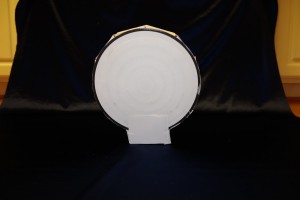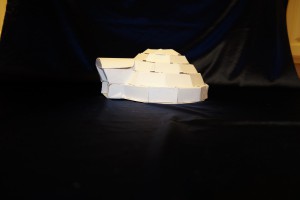Shimada on the Tokaido Road (number 24) reminds me of when Seikei and the Kabuki Troupe crossed the Rokugo River because in both scenes everyone has to be ferried across each river. Seikei said that one of the boatmen(who were ferrying people across the river)’s ancestors had saved Tokugawa Ieyasu, and as thanks Ieyasu had promised that the boatmen’s descendants would always be able to ferry people across the river, so a bridge was never built. In the picture there is no bridge either.
In the picture of Shimada there are not very many ferries, although many people are lined up to cross. From this I can infer that this would have been a bottle neck where travelers would have to wait a long time to continue making major progress to their destination. I can also infer that, even if each ferry ride is not very expensive, the sheer number of them would provide any boatmen and their families enough to sustain themselves. There is what looks like a permanent settlement next to the river where the boatmen would live with their families. There is a lot of variety between what all of the passengers are carrying, which shows that all members of every class would travel at least once in their lifetime.





